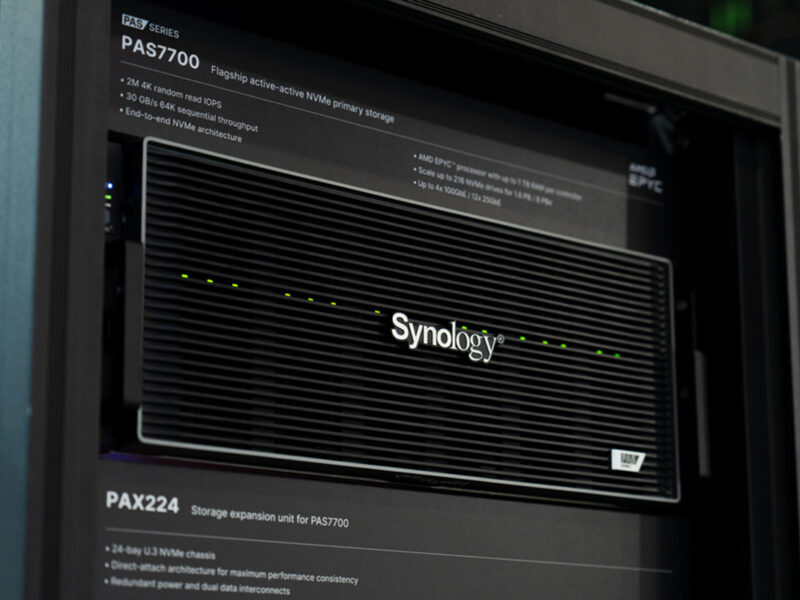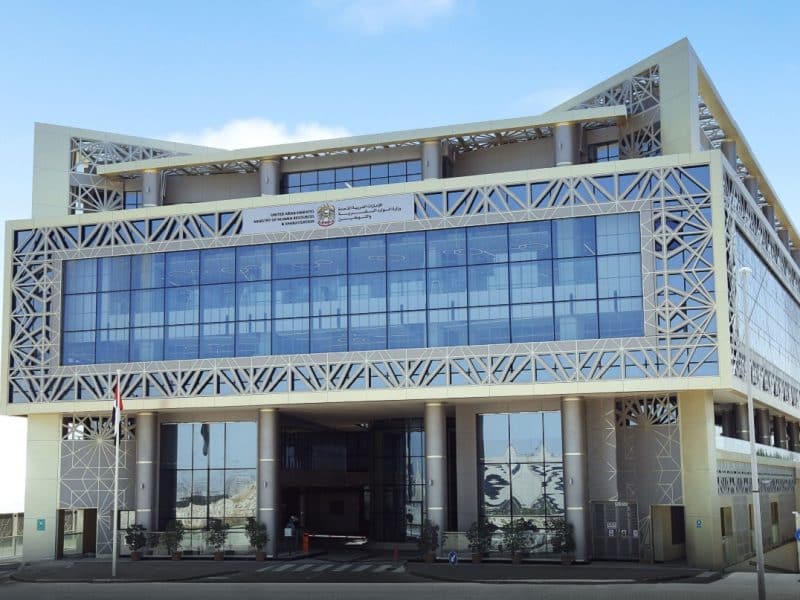With data expanding exponentially across enterprises storage is no longer a poor cousin to the other more high profile IT tasks. NME looks at what is being done across the region when it comes to the effects of SAN and iSCSI.
It is no secret that the proliferation of data being created across IT organisations is exploding in size. Analysts estimate annual growth of data to exceed 60% up to 2011, this sort of exponential growth means that IT managers and vendors increasingly have to look at the question of storage with new eyes.
Coupled with the growth comes the effect that iSCSI and storage area networks (SANs) are having on the storage market. Compliance and regulation together with the importance of safeguarding such large amounts of data has made storage a real priority for the IT professional.
Like other technologies storage continues to evolve to meet emerging customer needs. In recent months we have witnessed the rise of new technologies that will change the way we look at storage in the future.
Over the past 12 to 18 months there have been some major changes in the storage field with new technologies coming to the fore and perception changing.
“The explosion of the data is enormous and that is one thing. But in general it does not just concern the storage area. We are seeing movement to a pool of resources where storage and servers as infrastructure resources is combined,” says Alfred Steinecker, director of enterprise server and storage software, HP Europe, Middle East and Africa (EMEA).
“Like other technologies storage continues to evolve to meet emerging customer needs. In recent months we have witnessed the rise of new technologies that will change the way we look at storage in the future,” predicts Khalid Khalil, regional sales manager CEMA for Brocade.
The technologies that Khalil believes to be game changers include the advent of solid state disks (SSD), fibre channel over ethernet (FCoE) and deduplication.
“Solid state technology offers enterprise customers unprecedented I/O performance that rotating hard drives can not match. That opens the door for the deployment of demanding applications that required huge amounts of storage in the past. The new FCoE protocol enables the transport of fibre channel SAN storage over lossless Ethernet which means datacentres will be able to use a lower number of server adapters, fewer cables and fewer switch ports. Finally deduplication simply reduces storage cost by allowing users to remove duplicated data.
Users like GV Rao, general manager of ICT at the United Development Company in Qatar has seen his storage needs dramatically change over the course of the last year. “The business needs are growing and expectations are increasing so from our end things have changed drastically and so we are in the process of expanding our existing storage,” says Rao.
“What we are seeing is that people are increasingly questioning the value of fibre channel and they are looking for alternatives and rather than have expensive dedicated storage infrastructure in terms of host bus adaptors and switches and things like that they are looking for different alternatives, so I definitely think there is a gap there for iSCSI in the market,” says Anthony Harrison, solutions specialist for server and storage management, Symantec.
Deep impact
In many ways IT as a whole was perceived in the region as very much a haphazard and even wild west like environment. Things were done not according to a specific system or regulation but instead in a ‘just make it work’ manner, but the arrival of compliance, regulations and protocols to the Middle East has changed all that.
“Regulation and compliance has definitely had an impact on storage. Legally we now have to keep a lot more information for a set period of time, this means an increased requirement in terms of storage,” comments Bassem Aboukaher, regional IT director MENA for Leo Burnett.
Brocade has observed the effect that regulation has had and Khalil has seen enterprises tailor their storage solutions to meet regulatory requirements and to ensure compliance with these mandates. “Regulatory requirements create a need for data storage that tends to drive advancements to ensure compliance,” says Khalil.Standards are equally important, Harrison points out, if enterprises want to reduce the risk of being left behind in the dark. “The overall rationale for following the standard is that it lowers the risk of being left out on your own. I think standards are definitely a good thing and what we are seeing is that there less appetite for being at the leading edge so most people are following the herd and staying with the majority,” explains Harrison.
“I know for a fact that the governments and finance sectors especially are treating these compliance measures with a great deal of importance. In terms of compliance I am 100% sure that our customers are looking more and more into being compliant with international standards,” says Mohamed Halawa, enterprise marketing manager, Dell.
While regulation and compliance are relatively new to the region, the iSCSI protocol has been around for a while and perceptions regarding its use and uptake remain mixed.
The overall rationale for following the standard is that it lowers the risk of being left out on your own. I think standards are definitely a good thing, what we are seeing is that there is less appetite for being at the leading edge.
“iSCSI is an agreed, standardised way of communicating between servers and storage. In terms of what it does, the fact that it is there and is defined as a standard gives people options. I think this will be the industry standard because going down that route gives you 30% better value than sticking with a single vendor,” predicts Harrison.
Khalil is less optimistic about the future for iSCSI. “It as initially was promoted as a poor man’s SAN technology, but it has not been successful in penetrating datacentres where fibre channel remains the dominant technology. We don’t expect iSCSI to have dramatic impact on datacentres moving forward due to its limited deployment in mission critical environments,” he says.
Money makes the data go round
Storage like everything else costs money and given the increase in data coupled with the decline in budget spending on storage is an area that could likely be impacted.
“I think the key feedback we are receiving is the budget constraints. We see that these constraints are somewhat related to the resources driving new projects and so it limits customers across all verticals at the moment,” said Steinecker of Dell.
Halawa explains that what he is hearing from CIOs and IT managers is that it is not a question of either not spending or decreasing spending, but in exercising caution. He is quick to point out that many customers do choose to invest in new storage solutions but only once they have done an exhaustive inventory of their requirements and budget.
Aboukhater believes that financial considerations now put more power in the hands of the customers. “If you are a company with vision and long term plans then I think now is the best time to go for these solutions because at this point the customer is king and you can get whatever you want. Vendors are hungry for the business and it’s definitely a buyer’s market at the moment,” advises Aboukhater.
Due to the fact that data by its very nature continues to grow storage remains a key investment and so Khalil explains that it is simply not just a discretionary expense.
“Despite the economic slow down, enterprises continue to store data. Enterprises will cut, but not eliminate, their storage expenses at a lower pace than they cut other technology area. Brocade expects that demand for storage will slow down slightly during the global recession, but will be one of the first areas to recover,” says Khalil.IT managers are having to turn to the financial officer when it comes to planning on spending and the question is simply, just how much of my overall budget should I allocate towards storage.
“It all depends on what kind of company you are. If you are dealing with a lot of big files like a traditional advertising company and you deal with large files then your storage requirements will be much higher then somebody who works with Word and Excel and small data like that,” says Aboukhater.
He also points out that some enterprises will place higher value on their stored data then others and this will in turn guide the spending of the organisation.
The future is now
In an uncertain future it takes a brave IT professional or vendor to gaze into the crystal ball and predict the future for storage. However the majority of market players remain upbeat and even optimistic regarding the foreseeable future.
GV Rao believes a big improvement in the storage space is on the cards, “I see a big improvement as the cost of the SAN is more affordable and people see the importance in the SAN boxes these days. Data will then be controlled in a better manner and users will become more comfortable in accessing the data from SAN centrally across the regions,” predicts Rao.
Aboukhater is betting on a bright future for storage in the short term. “It’s going to be an even hotter item because of what is going on with the economy worldwide. I am sure there will be even tougher regulations and requirements that will increase the demand for storage.”
Aboukhater goes as far as to say that storage will become a lot more ‘intelligent’ as enterprises couple it with virtualised environments which include servers and storage.
Brocade’s Khalil agrees that virtualisation will impact greatly impact on storage deployments in the next two years while at the same time de-duplication is another technology that they predict will enable enterprises to deploy storage resources more efficiently.
“The simplification of storage will be on the agendas of IT managers. How can they get integrated storage from vendors, how can they get the storage deployed in as short a time as possible and anything that enables less complexity,” says Halawa of Dell.
Storage is not a new issue for the Middle East IT professionals but as regulations and standards bear down on them from one side and financial restraints exert pressure from the other side they will have to take a new look at their current arrangements.
Although the situation remains precarious the user is spoilt for choice and in an economy where cash is king they can finally fulfill all their storage requirements.









